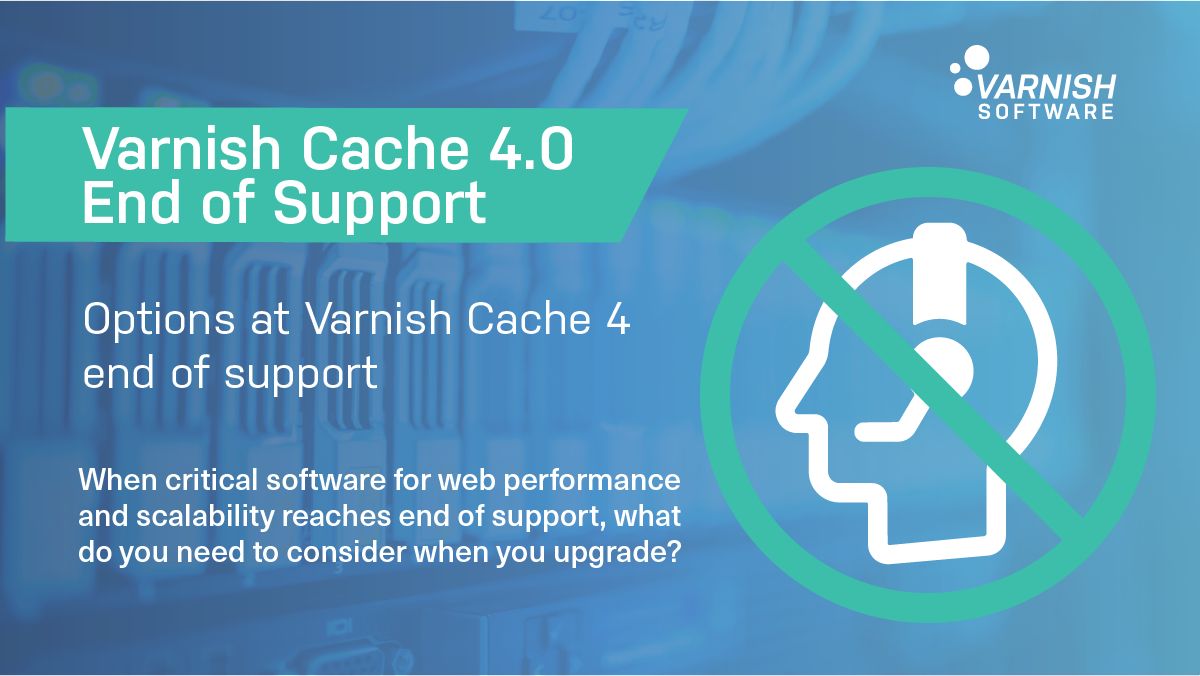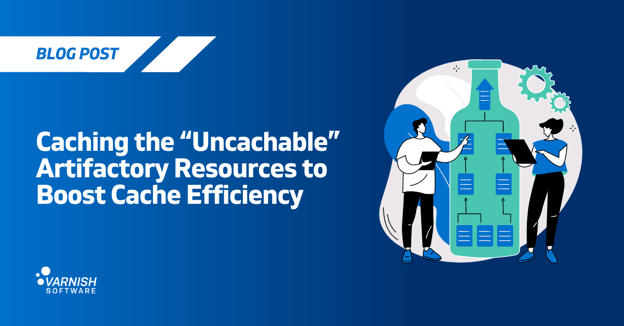The open source version of Varnish Cache 4.1x is no longer supported. For existing Varnish customers using Varnish Enterprise this is not an issue. For many open source Varnish Cache users this won’t be a surprise, and you will already have updated. The important point is that continued use of Varnish Cache 4.1 means that you will be going it alone. But you don’t have to.
Considerations and risks of continuing to use
Varnish Cache 4.1x
End of support for Varnish Cache 4.1x may have ripple effects in your organization, which you should consider once you know that a key piece of software is nearing its retirement.
Are you prepared to manage without these support functions and updated documentation? You might be; after all, the software continues to work, but you should think about how it works, at what cost and whether or not it will continue to work into the future, especially if the software in question is a key component of your infrastructure.
Some major risks of continuing to run out-of-date or obsolete software include:
- Security: The software no longer offers support or issues fixes for critical bugs or security vulnerabilities.
- Regulatory/compliance: Running unsupported software may drive you out of compliance with regulatory requirements. There are potential legal ramifications as well, which can lead directly to financial implications.
- Cost: Right away, maintenance and finding workarounds will take time and resources from focusing on your core business, particularly as more unforeseen gaps become obvious, e.g. a security flaw that leads to downtime or lost revenue as well as employee hours.
- Incompatibility: The longer you put off upgrading, the more out-of-date a piece of software becomes. Obsolescence makes it likelier that it won’t play nicely with other software or operating systems and won’t scale up for increased demand anyway.
Update or upgrade: A necessary action can be an opportunity
DIY trailblazer or not, the end-of-support moment for critical software can be an ideal time to reassess your setup to understand how much your needs have changed over time.
Since first installing Varnish, what has changed for you? Has your business changed? Do you see more traffic? Are you moving into streaming video at greater scale? Has the world changed around your business? For example, in the current Covid-19 crisis, has your workforce been forced to work from home? Have unusually high traffic peaks hit your sites and apps, making traffic more unpredictable?
By updating to the latest version of Varnish Cache, you of course continue to get the assurance that the risks listed above won’t become issues for you. By taking the time to assess your current needs, you may find that a Varnish Enterprise subscription meets your needs better, as your business has shifted.

What Varnish Enterprise offers
As we've written, existing Varnish Enterprise users don't need to worry about this update/upgrade. It is open source Varnish Cache 4.1 that is affected by the end-of-support situation. This is an opportunity to offer more information about how upgrading to Varnish Enterprise can help those current open source users who are re-examining their caching technology needs.
Varnish Enterprise is optimized for speeding up media streaming services, accelerating websites and APIs, and enabling global businesses to build custom content delivery networks (CDNs), unlocking unbeatable content delivery performance and resilience.
It offers greater performance and can scale to match any demand while delivering all kinds of content, including live and VoD video, at the lowest latency. Some Varnish Enterprise-only features include:
- 100TB+ edge storage
- Native TLS that enables 150Gbps throughput
- Content replication and pre-fetching
- Cache persistence
- Customized PoP placement
It is fully supported, and Varnish Enterprise is relied on by many global content providers because it offers:
- 24x7x365 support provision
- Professional services
- Short SLAs
- Long-term software lifecycles
- Backported security updates
/VS-logo-2020-197x60.png?width=136&height=60&name=VS-logo-2020-197x60.png)





